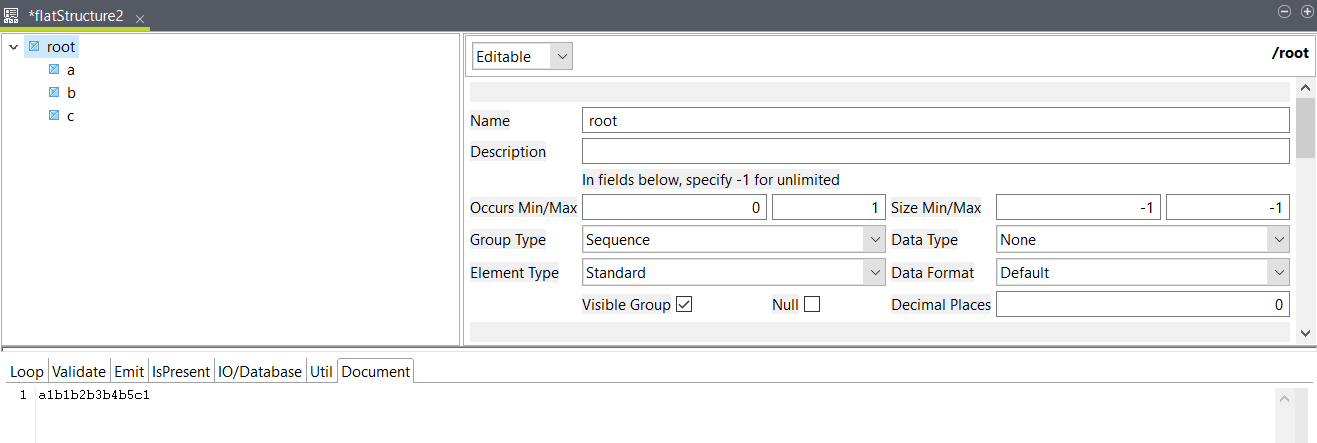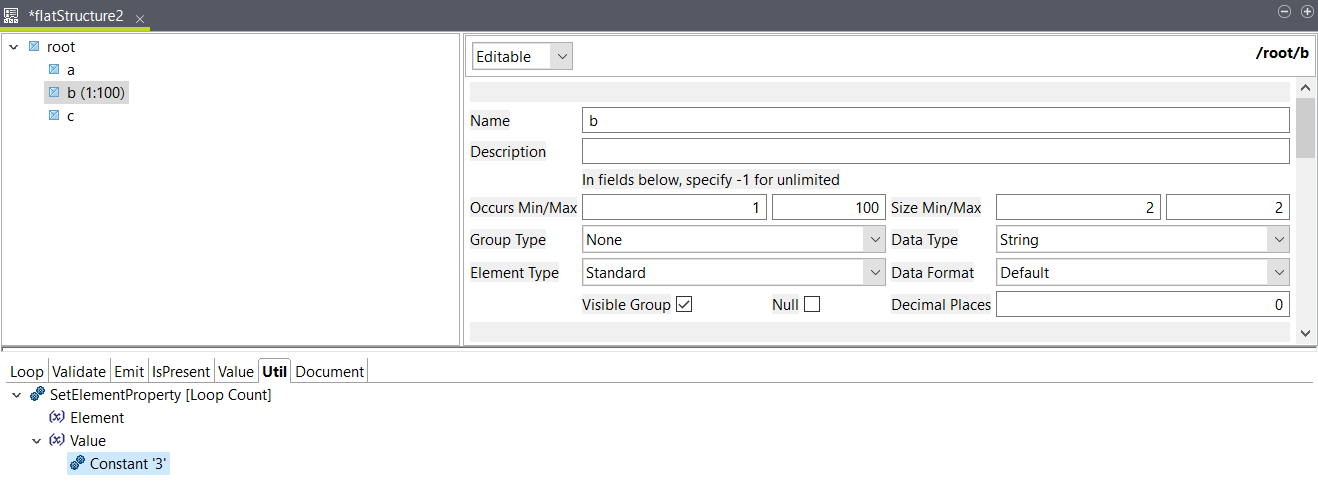Setting a number of loop iterations in a flat structure
Use a SetElementProperty to define the number of loops to read for an element and ignore other iterations.
Before you begin
About this task
In this example, you have a flat file containing three elements named a, b and c. The b element is a loop and you want to set a number of loop iterations that should be read and ignore the others. This can be done by setting the Occurs Min/Max values in the element properties, however, using a SetElementProperty instead can be useful if you want to change that value in a map without impacting the structure.
a1b1b2b3b4b5c1Procedure
Results

a1b1b2b3c1If needed, you can change the Loop Count property in the map, without impacting the structure or any other map which uses it.
Did this page help you?
If you find any issues with this page or its content – a typo, a missing step, or a technical error – let us know how we can improve!



